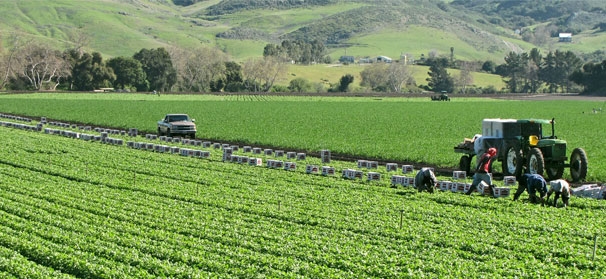Last month, for the first time in history, California enacted mandatory limits on how much water its residents can use. And yet, as a recent op-ed in The New York Times points out, the state is exporting 100 billion gallons of water a year in the form of cattle feed.
That’s right: cattle feed. California’s thirstiest crop isn’t almonds or broccoli or anything else you’ll find in the produce section, but alfalfa. If you eat a steak, there’s a good chance that cow’s diet included some alfalfa hay. But chances are slim that any of that feed came from California unless you get your beef from China, where most of California’s alfalfa ends up.
It’s outrageous to say the least. But it’s exactly what we should expect from a food system that is built not to be practical, but profitable.
The very dominance of California agriculture is an expression of the same logic. California supplies more than half of America’s fresh fruits and vegetables. Not only are nine of the top 10 counties by agricultural sales located there, but the top county, Fresno, produces more than 23 other states.
The United States is so dependent on California farms that we could literally face hunger if they failed. But even that frightening scenario would not necessarily force the system to change, as the history of famines from Ireland to Ethiopia shows. That’s because capitalist goods do not flow to where they’re most needed. Instead, they always flow to where they’re most profitable. The market doesn’t care if you’re starving; it only cares how much money you’ve got.

